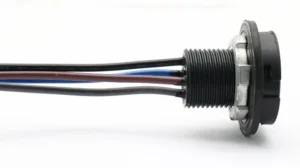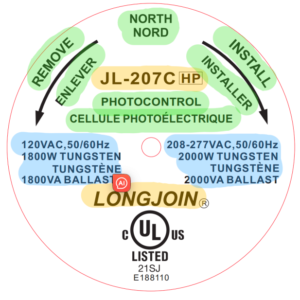What are the key differences in interoperability between NEMA and Zhaga standards?
Introduce
Within outdoor lighting systems, achieving seamless integration between components is crucial. Interoperability ensures various elements of a lighting system function together flawlessly.
Two prominent standards, NEMA and Zhaga, address this challenge. NEMA prioritizes physical compatibility between lighting systems. Conversely, Zhaga focuses on system-level interoperability, guaranteeing control gear and communication protocols operate harmoniously.
This article delves into these key distinctions, explaining how each standard fosters a more interchangeable and adaptable outdoor lighting environment.
NEMA Standards and Interoperability
The National Electrical Manufacturers Association (NEMA) sets standards for various electrical products, including outdoor lighting. These standards play a vital role in ensuring physical compatibility between light fixtures and light sources.
NEMA standards primarily focus on the physical dimensions and configurations. This confirms that photocells from different manufacturers can be easily screwed or plugged into compatible bases. Here are some specific examples.
- Base Types: NEMA defines standard base types, such as screw-in, which is common in household bulbs and moguls, the larger bases for high-wattage applications. Standardized bases guarantee a proper fit and electrical connection.
- Socket Configurations: NEMA standards also specify socket configurations within light fixtures. This ensures the bulb’s pins or contacts align correctly for proper electrical connection and operation.
While NEMA prioritizes physical fit, it also addresses environmental considerations for outdoor lighting products. Like NEMA 3R, NEMA ratings indicate a lighting system’s ability to withstand rain, sleet, and other outdoor elements. These ratings help ensure the safe and reliable operation of outdoor lighting systems.
Zhaga Standards and Interoperability
The Zhaga Consortium, another prominent organisation, focuses on interoperability at the system level within outdoor lighting. Unlike NEMA’s emphasis on physical fit, Zhaga tackles compatibility between various components that make up a lighting system.
Zhaga’s specifications promote seamless communication between different elements. This includes.
- LED modules: These are self-contained light sources containing LEDs, often used in modern outdoor fixtures. Zhaga standards ensure these modules from different manufacturers can be easily exchanged and installed in compatible lighting fixtures.
- Drivers: These are electronic components that regulate the power supply to the LEDs. Zhaga specifications guarantee that driver from various brands will work seamlessly with compatible LED modules.
- Connectors: Standardized parts, specified by Zhaga, that ensure a reliable electrical connection between LED modules, drivers, and other components within a lighting fixture.
To ensure smooth integration between components from different brands, Zhaga offers a certification program. Manufacturers can test their products against Zhaga standards, and certified components carry the Zhaga mark to signify that they will function properly within a Zhaga-compliant lighting system.
What are the Key differences in interoperability between NEMA and Zhaga standards?

While both NEMA and Zhaga promote interoperability in outdoor lighting, their approaches differ significantly.
NEMA acts like a standardized building block system, ensuring the physical compatibility of components. Think of Legos; the different-colored bricks can be easily connected due to their standardized shapes and sizes. Similarly, NEMA guarantees bulbs from various brands will physically fit into compatible lighting fixtures.
In contrast, Zhaga focuses on system-level communication, akin to different software programs working together seamlessly. Imagine using various software applications on your computer – a word processor, a spreadsheet, and a presentation tool. Although created by different companies, they can all interact and share data because they adhere to common operating system protocols.
Likewise, Zhaga ensures that the control gear and communication protocols within a luminaire function harmoniously, regardless of the manufacturer.
How Each Standard Addresses Interoperability Challenges
Both NEMA and Zhaga play crucial roles in tackling interoperability challenges within outdoor lighting systems, albeit in distinct ways. Below is a brief discussion.
NEMA
Prior to NEMA products, outdoor lighting systems faced compatibility issues. Lighting fixtures from one manufacturer might not accept bulbs from another due to varying base types and sizes. NEMA’s standardized dimensions for both bulbs and luminaires ensure a seamless physical fit, regardless of the manufacturer.
This allows for greater flexibility and easier maintenance – you can swap bulbs from different brands into compatible fixtures.
Zhaga
With the rise of LED technology in outdoor lighting, a new set of interoperability challenges emerged. Traditional NEMA standards primarily addressed physical fit, but complex LED systems require components like drivers and modules to communicate effectively. Zhaga products with their focus on control and communication protocols bridged this gap.
Standardized specifications for LED modules, drivers, and connectors ensure these components, even from different manufacturers, can work together flawlessly within a system. This enables features like dimming, remote control, and sensor integration, creating a more intelligent and adaptable outdoor lighting system.
Impact on Industry and Applications
The differing approaches of NEMA and Zhaga standards have a significant impact on various stakeholders within the outdoor lighting industry:
Thru-Beam Sensors
- Reduced Development Costs: Standardized components across brands, thanks to both NEMA and Zhaga, allow manufacturers to focus on innovation within their specialties rather than reinventing the wheel for basic compatibility.
- Expanded Market Reach: NEMA’s physical compatibility standards open doors for broader market reach, as fixtures can be easily paired with bulbs from various manufacturers. Zhaga, on the other hand, facilitates the development of more complex and interconnected lighting systems, creating opportunities for companies specializing in control gear and smart technology.
Impact on End-Users
- Simplified Maintenance: NEMA standards ensure bulbs from different manufacturers can be easily swapped, reducing maintenance hassle.
- Greater System Flexibility: Zhaga-compliant systems enable features like dimming and remote control, offering end-users greater control over their outdoor lighting environment. Additionally, with standardized components, future upgrades and system expansion become easier.

Market Implications and Opportunities
The combined impact of NEMA and Zhaga standards fosters a more dynamic and competitive outdoor lighting market. Standardized components free up resources for manufacturers to focus on innovative technologies and features, leading to a wider variety of efficient and intelligent lighting solutions.
Further standardization has the potential to streamline production processes and potentially lower overall system costs, benefiting both manufacturers and end-users.
Zhaga’s focus on communication protocols paves the way for the development and integration of smart lighting technologies, creating new market opportunities for connected and intelligent outdoor lighting systems.
Final words
Understanding the nuances between NEMA and Zhaga standards is essential for navigating the lighting technology landscape. For reliable NEMA and Zhaga photocells, consider Chiswear. With its commitment to quality and innovation, LONG-JOIN products offer solutions aligned with industry standards, ensuring seamless integration and future-proofing.






